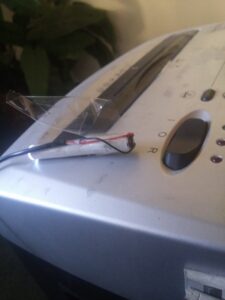Do you find yourself wondering how to calculate battery plates? You’re not alone! Understanding the process of calculating battery plates can be quite daunting, especially if you’re not familiar with the technicalities involved. But fear not, because in this article, we will guide you through the steps to calculate battery plates in a simple and straightforward manner. You’ll soon have a clear understanding of how to assess the number of plates needed for your battery and be able to make informed decisions. So, let’s dive right in!
How To Calculate Battery Plates
Introduction
Battery plates are the heart of any battery system, whether it’s in your car, smartphone, or a larger power storage system. Understanding how to calculate battery plates is essential for determining the capacity and performance of a battery. In this article, we will explore the process of calculating battery plates and discuss the important factors to consider. By the end, you will have a clear understanding of how to determine the number of plates needed for your battery application.
Understanding Battery Plates
Before diving into the calculation process, it’s important to understand what battery plates are and how they contribute to a battery’s functioning. Battery plates are thin, flat structures made of various materials, such as lead, lead oxide, or other metals, depending on the type of battery. These plates hold the active materials responsible for the electrochemical reactions that produce electrical energy.
In lead-acid batteries, for example, the positive plate is made of lead dioxide, while the negative plate is made of sponge lead. The plates are immersed in an electrolyte solution, typically sulfuric acid, which facilitates the chemical reactions that generate electricity.
The Role of Battery Plates in Capacity
The number of battery plates directly influences the capacity and energy output of a battery. The more plates a battery has, the greater its capacity to store and deliver electrical energy. Therefore, calculating the correct number of plates is crucial to ensure your battery meets the power requirements of your application.
Factors to Consider
When determining the number of battery plates needed, several factors come into play. These include:
1. Voltage Requirement: Different applications require different voltage levels. The number of plates must be calculated to achieve the desired voltage output.
2. Current Demand: The amount of current a battery can supply is directly related to the number of plates. Higher current demands may require a larger plate surface area.
3. Battery Size: The physical dimensions of the battery dictate how many plates can fit within the available space. Calculations should consider the size constraints.
4. Chemistry and Plate Design: Different battery chemistries and plate designs affect the plate’s surface area and the number of plates required.
Calculating Battery Plates
To calculate the number of battery plates needed, you’ll need to consider the factors mentioned above. Here’s a step-by-step process to guide you:
1. Determine the required voltage for your application. This information may be specified by the manufacturer or determined by the equipment you intend to power.
2. Assess the current demand of your application. This can be determined by examining the electrical load or consulting the manufacturer’s specifications.
3. Consult the battery manufacturer’s documentation or technical specifications to find the ampere-hour (Ah) rating for the battery. This rating indicates the battery’s capacity to deliver a certain amount of current over a specific duration.
4. Determine the number of plates required based on the battery’s Ah rating. Higher Ah ratings generally require more plates to provide the desired capacity.
5. Consider the battery’s chemistry and plate design. Specific battery chemistries may have unique plate requirements. Be sure to consult the manufacturer’s guidelines or seek professional advice if necessary.
6. Account for any physical constraints, such as the available space for the battery. Ensure that the calculated number of plates fits within the designated dimensions.
Remember, calculating battery plates is a complex task that requires precision. It is always recommended to consult with battery experts, manufacturers, or professionals with experience in battery design if you have specific requirements or are unsure about the calculations.
Calculating battery plates is essential for determining the capacity and performance of a battery. By considering factors such as voltage requirements, current demand, battery size, and plate design, you can accurately determine the number of plates needed for your application. It is important to consult the manufacturer’s documentation, seek professional advice if necessary, and ensure that the calculated number of plates fits within the battery’s physical constraints.
Remember, understanding how to calculate battery plates allows you to optimize your battery system, ensuring it meets the power requirements of your application and operates efficiently.
Frequently Asked Questions
How do I calculate battery plates?
To calculate battery plates, you need to know the desired battery capacity, the nominal cell voltage, and the ampere-hour capacity of each plate. The formula is as follows:
Number of Plates = (Desired Battery Capacity / (Nominal Cell Voltage * Ampere-Hour Capacity of Each Plate))
What is the desired battery capacity?
The desired battery capacity refers to the amount of charge you want the battery to hold. It is typically measured in ampere-hours (Ah). This value depends on your specific needs and the intended usage of the battery.
What is the nominal cell voltage?
The nominal cell voltage is the average voltage of a single cell in the battery. It is usually specified by the battery manufacturer and can vary depending on the type and design of the battery.
How do I determine the ampere-hour capacity of each plate?
The ampere-hour (Ah) capacity of each plate is determined by the battery manufacturer and is usually specified for the particular battery model. It represents the amount of charge that a plate can deliver or store over a specific period at a specific discharge rate.
Can I use a different ampere-hour capacity for each plate?
In general, it is recommended to use plates with the same ampere-hour capacity to ensure balanced performance and longevity of the battery. However, there may be certain cases where using different ampere-hour capacities for different plates is feasible, but it requires careful consideration and may affect the overall battery performance.
Are there any other factors I need to consider when calculating battery plates?
Yes, there are several other factors to consider when calculating battery plates, such as the battery chemistry, temperature, discharge rate, and desired depth of discharge. These factors can influence the overall battery performance and should be taken into account for accurate plate calculations.
Final Thoughts
Calculating battery plates is an essential step in determining the size and capacity of a battery. By following a simple formula, you can easily calculate the number of plates required. First, determine the desired Ampere-hour (Ah) capacity for your battery. Next, divide this capacity by the nominal voltage of the battery to obtain the required plate area. Then, divide the plate area by the average area per plate to find the total number of plates needed. Finally, consider factors like battery chemistry and manufacturer recommendations to fine-tune your calculations. So, when it comes to determining the number of battery plates, following these steps will ensure accurate results.



